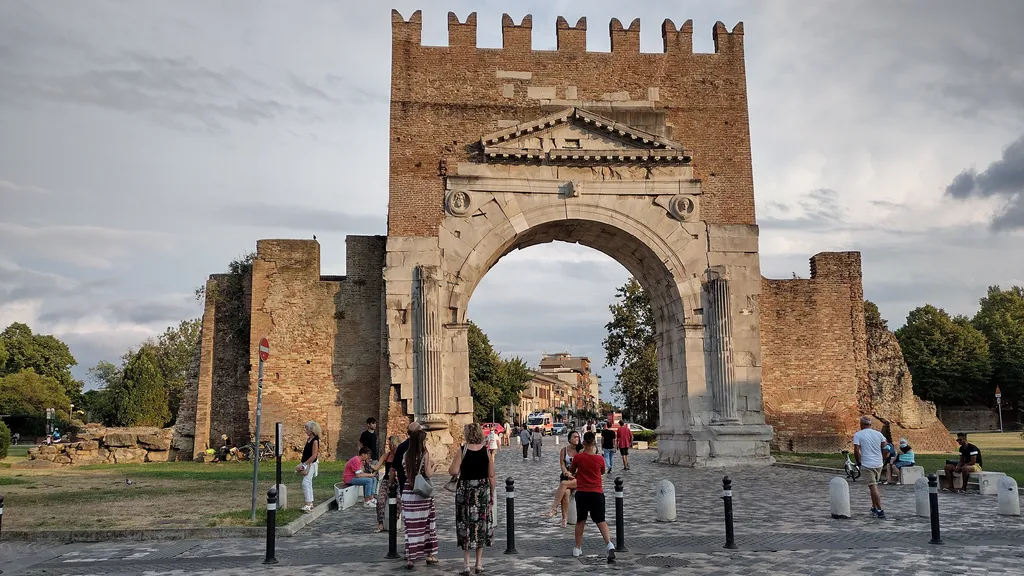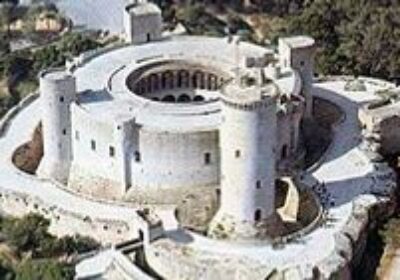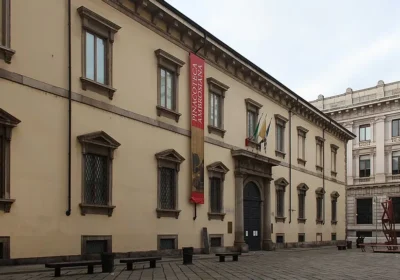Overview Tour of Rimini (Ariminum: from the Arch of Augustus to the Bridge of Tiberius) – visit to the Temple of Malatesta
The Arch of Augustus in Rimini is the most important monument of the Roman era in Northern Italy. It is the oldest gate of the city and it is no coincidence that it bears the name of Emperor Augustus.
It was built in 27 B.C. by decree of the Roman Senate, in gratitude to Emperor Augustus for the restoration of one of the most important consular roads, the Via Flaminia, built as early as 220 B.C. It led to the restoration of the Via Flaminia, one of the most important consular roads of the city. It led from ancient Rome northwards towards Ariminum (Rimini), and in the Middle Ages was called the Ravenna Road.
Beyond the Arch of Augustus was a Roman forum, on the site of which today stands the Piazza delle Martyrs, the central square of Rimini. Here you can see the tribune built in 1555 in honour of Julius Caesar.
Near Piazza Tre Martiri is the first of the Italian monumental buildings of the Renaissance period – the so-called Temple of Malatesta (15th century). The temple, built of white marble, externally reflects the architecture and spirit of Roman times. Here you can admire the sculptures of Florentine Agostino di Duccio and Veronese Matteo De Pasti, as well as the works of the great Italian artists Giotto, Vasari and Piero Della Francesca, who worked in Rimini.
Castel Sismondo was conceived as a palace and fortress. As the marble plaque at the entrance to the castle states, Sigismondo Malatesta was its architect. Sigismondo was only 21 years old at the time. The great Florentine architect Filippo Brunelleschi was also involved in the construction of the castle.
Antica Pescheria or the old fish market, built by the Rimini architect Gian-Francesco Buonamici in 1747, is one of the most characteristic and lively corners of the city, an example of 18th century civic architecture. Nowadays it is a very lively place with many restaurants, sidewalk cafes and bodegas filled with visitors and young people.
Piazza Cavour is the monumental and urban centre of Rimini. On one side of the square are shops and cafes, while on the other side are solemnly lined with palaces that are considered the largest in the city: Palazzo Garampi, Palazzo del Arengo and Palazzo del Podesta. At the end of the square you can see the beautiful facade of the Municipal Theatre, built in neoclassical style and inaugurated in 1857 by the great Italian composer Giuseppe Verdi. In the centre of the square is a monument to the Roman Pope Paolo V and an ancient fountain decorated with a “cone”, with an inscription stating that Leonardo da Vinci himself admired it during his stopover in Rimini on his way to the nearby town of Cesenatico, where he was to undertake the reconstruction of the harbour.
A major architectural structure of the Roman era, the Emperor Tiberius Bridge was begun during the era of Emperor Augustus in 14 AD and completed by his grandson and successor Emperor Tiberius in 21 AD. The bridge, built of durable white Istrian stone, has five arches and spans the Marecchia River, which crosses the city.

















